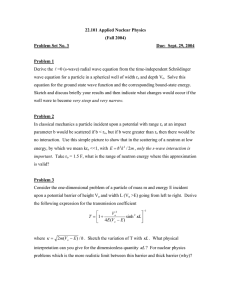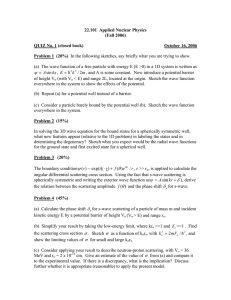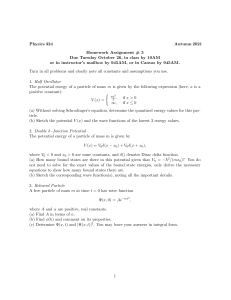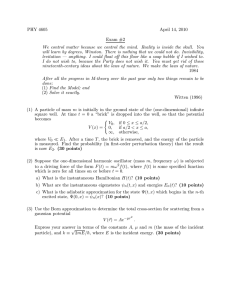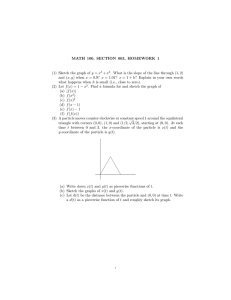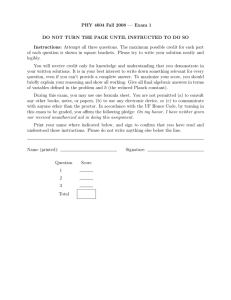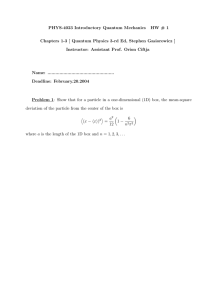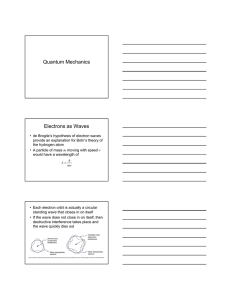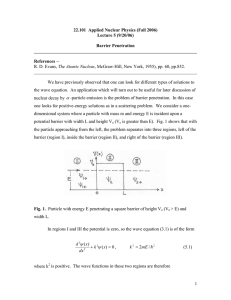22.101 Applied Nuclear Physics (Fall 2006) Problem Set No. 3
advertisement
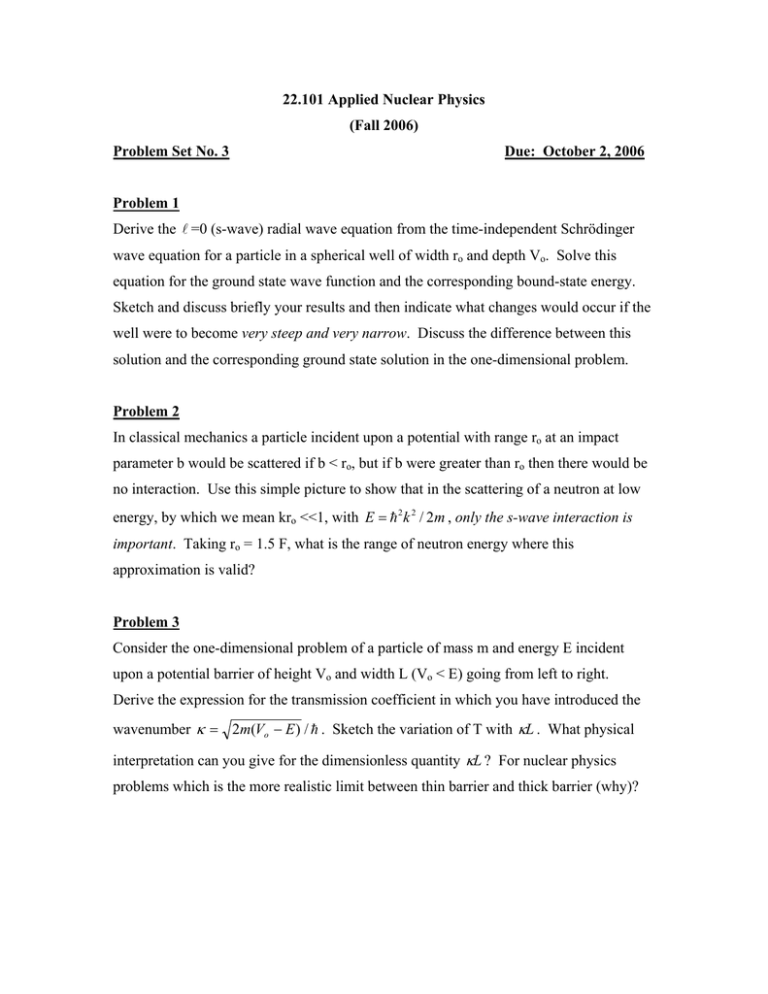
22.101 Applied Nuclear Physics (Fall 2006) Problem Set No. 3 Due: October 2, 2006 Problem 1 Derive the l =0 (s-wave) radial wave equation from the time-independent Schrödinger wave equation for a particle in a spherical well of width ro and depth Vo. Solve this equation for the ground state wave function and the corresponding bound-state energy. Sketch and discuss briefly your results and then indicate what changes would occur if the well were to become very steep and very narrow. Discuss the difference between this solution and the corresponding ground state solution in the one-dimensional problem. Problem 2 In classical mechanics a particle incident upon a potential with range ro at an impact parameter b would be scattered if b < ro, but if b were greater than ro then there would be no interaction. Use this simple picture to show that in the scattering of a neutron at low energy, by which we mean kro <<1, with E = h 2 k 2 / 2m , only the s-wave interaction is important. Taking ro = 1.5 F, what is the range of neutron energy where this approximation is valid? Problem 3 Consider the one-dimensional problem of a particle of mass m and energy E incident upon a potential barrier of height Vo and width L (Vo < E) going from left to right. Derive the expression for the transmission coefficient in which you have introduced the wavenumber κ = 2m(Vo − E) / h . Sketch the variation of T with κL . What physical interpretation can you give for the dimensionless quantity κL ? For nuclear physics problems which is the more realistic limit between thin barrier and thick barrier (why)?
